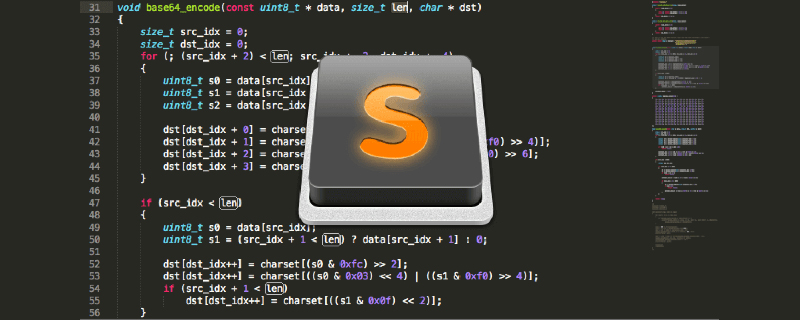
The sublime editor can handle most languages related to web page editing, and provides operations such as highlighting and prompts. Familiarity with shortcut key operations can also save a lot of trouble. The following column sublime usage tutorial will summarize and introduce the sublime shortcut keys. I hope it will be helpful to friends in need!

Shortcut keys for editing text:
1. Select all text: Ctrl A (this shortcut key is in the Also available in some browsers);
2. Search full text: Ctrl F (search all text on this page);
3. Select the current line: Ctrl L;
4. After selecting the text, use Ctrl Shift L to have a cursor appear after each line, and then you can compile the selected lines at the same time;
5. Quickly create a cursor Ctrl Shift ↑↓( Select any direction) to quickly create a cursor to edit each line;
Shortcut keys for operating text:
1. Undo previous modifications: Ctrl Z (Available in most text editors);
2. Restore previously undone or edited text: Ctrl Y (Available in most text editors);
3. Comment single line: Ctrl / (commenting multi-line text can also be used, programmers need to remember!!). 4 Comment out multiple lines Ctrl Shift / (very important for programmers!!!).
Editor function operation shortcut keys:
1. Window split screen, restore the default 1 screen: Alt Shift number (non-small keyboard number, 1-4 is Number of split screens);
2. Search for files: Ctrl P;
3. Do not disturb mode: Shift F11 (remove the left sidebar and then make it full screen)
Installation of editor plug-in:
1. Use the shortcut key Ctrl Shift P in the sublime editor to open the editor command box;
2. Enter install in the box package, install management plug-in;
3. Taking the installation of markdown plug-in as an example, you only need to enter markdown in the box to install and use it;
The above is the detailed content of sublime shortcut keys. For more information, please follow other related articles on the PHP Chinese website!




